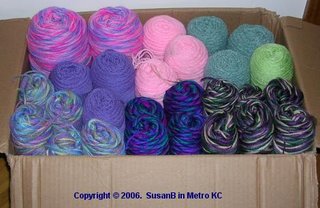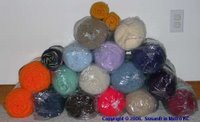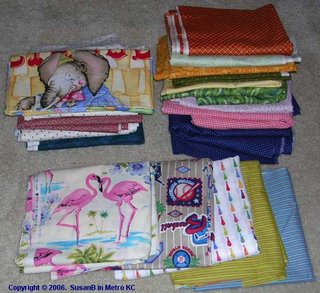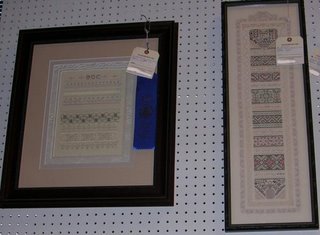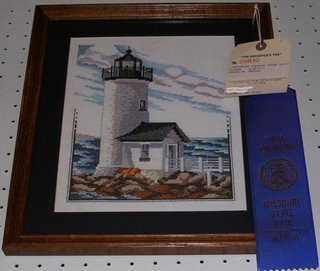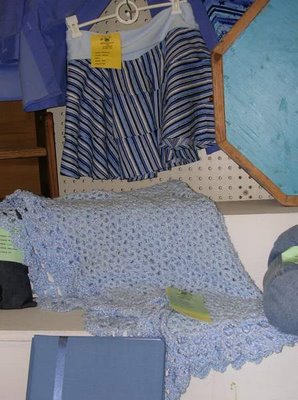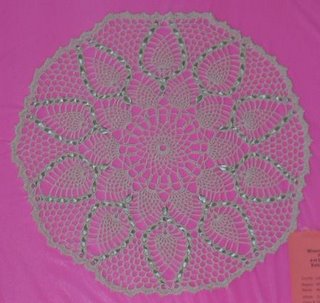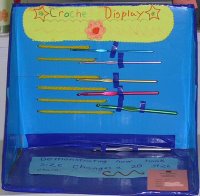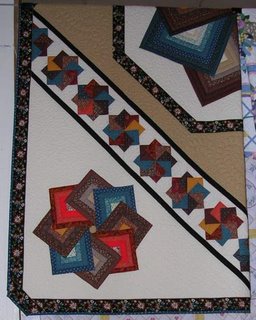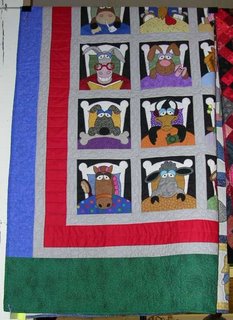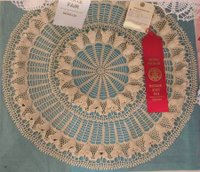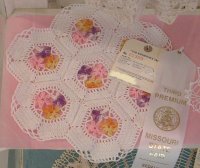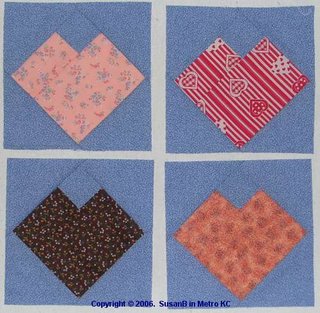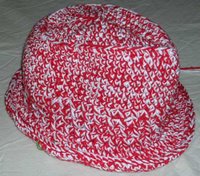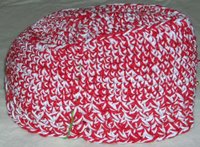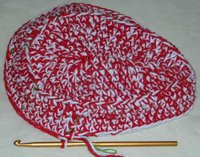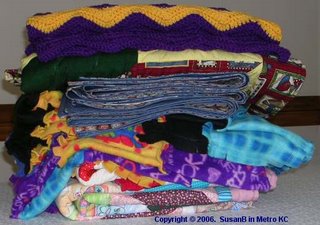The Art of Knitting DVD provides a varied assortment of knitting information. With a total running time of 3 hours and 39 minutes, there is a little over an hour of knitting instruction. A knitting library and a resource guide contain information in a still frame format. The index provides quick access to any subject on the DVD. Three patterns are included on the DVD, a hat, a bikini, and a wire bracelet.
The basic knitting instruction is presented with a teacher showing how to knit and then a student repeating the steps. This is a good approach for teaching beginning knitters. As an intermediate knitter, I found it very tedious. A separate segment showed the Continental vs. American style of knitting. The intermediate skills segment covered fairly basic skills: gauge, increasing and decreasing, picking up dropped stitches. Overall, the instructional material seems targeted at beginning knitters.
In the yarn topics, we see alpacas being sheared, wool being cleaned and spun into yarn and dyed. The baby alpacas are cute and the overall presentation is interesting. My mom enjoyed this part and ignored everything else. Only natual fibers are shown. Acrylic and other synthetic fibers use different processes.
I was a bit disappointed in the segment on fiber types. The speaker described it as a presentation on yarn, yarn construction and how yarn behaves when it is knit. Garments made from various fancier/glitzier yarns are shown, but little unknitted yarn is shown. No samples of more basic yarns are shown. I wanted to see more samples of yarns for beginners and more utilitarian yarns. I tend to the utilitarian yarns.
The knitting lifestyles section discusses knitting circles, knitting events (e.g., workshops and conventions), and physiotherapy. The fit-to-knit physiotherapy segment discussion potential injuries and presents techniques and exercises to help prevent injury.
Here is a detailed contents listing with some added description and comments. The length of the video segments is given in parenthesis in the format hours:minutes.
- Overview (Detailed table of contents in a still frame listing.)
- Topics
- Knitting Demos
- Getting Started: The Basics of Knitting (42:05)
Casting on, knit stitch, purl stitch, fixing mistakes, increase,
decrease, garter stitch, stockinette stitch, ribbing, bind/cast off, adding/changing yarn, weaving in ends, hat pattern.
- Choose Your Knitting Style: American or Continental (2:39)
- Intermediate Skills (17:33)
Making a swatch, measuring gauge, more methods to increase and decrease, ripping out, picking up dropped stitches, stripes.
- Designer Workshop: Swimwear (8:33)
Features Ashley Paige discussing her swimwear designs. There's a brief glimpse of the studio/workshop. A few celebraties who have worn her designs are mentioned. A bikini pattern accompanies the segment, but there is no demo. I gained little understanding of the design process.
- Fashion Inspiration: Wire Knitting (10:28)
Instructions for knitting with wire and a pattern for a bracelet.
- Yarn/Tools/Color
- Fiber Types (16:24)
- Shearing (11:48)
- Spinning (4:08)
- Dyeing (11:27)
- Tools (4:07)
Discussion of different types of knitting needles and useful knitting tools.
- Color Theory (19:46)
Covers the color wheel, primary, secondary and complementary colors, warm vs. cool colors.
- Zen Knitting (11:45)
Features Bernadette Murphy, author of Zen and the Art of Knitting, discussing knitting as a healing and meditative art form and why people knit.
- Knitting Lifestyles
- How to Start a Knitting Circle: NYC (6:52)
- "Knitting as Soul Food" Circle: CA (6:07)
- Knitting Events: Guilds/Workshops/Conventions (11:49)
- Fit-To-Knit Physiotherapy (7:06)
- Knitting Library
- Stitch Library (20 still frames)
Each screen shows a photo of swatch and chart for making the stitch.
- Glossary of Terms (6 still frames)
- Abbreviations (5 still frames)
- Patterns (7 still frames)
Patterns for hat, bikini, and wire bracelet.
- Tips (9 still frames)
- Music to Knit By
Piano, flute and punk selections, running 10:18, 5:16 and 3:46 respectively
- Resource Guide (all still frames)
- Local Yarn Stores (listed by state)
- Product Index (contact info for the companies represented on the DVD)
- Books (photos of book covers)
- Magazines & Websites (5 listings)
- Knitting Charities
Listed alphabetically with contact information. Listings end in the O's and some contact information is out of date.
- Events (listed by month)
- Education (classes and workshops)
- Index
Quick access to any subject on the DVD.
This is a good instructional DVD for the beginning knitter. If you have knitting experience and want to brush up on the basics and learn more intermediate/advanced techniques, consider The Art of Knitting/Crochet 2.


